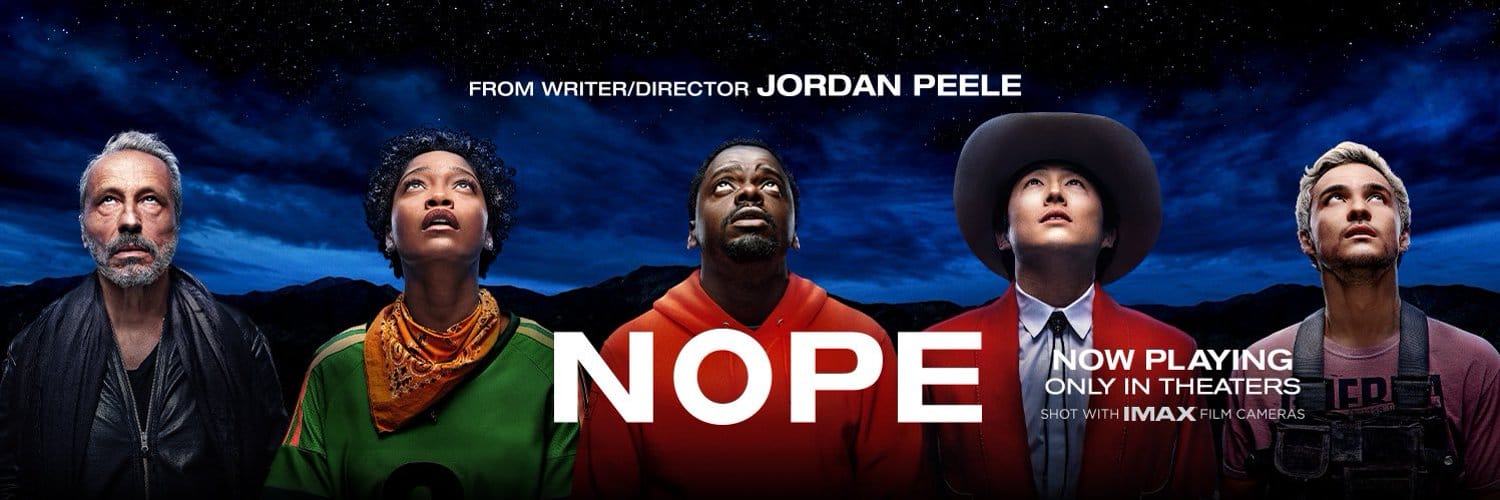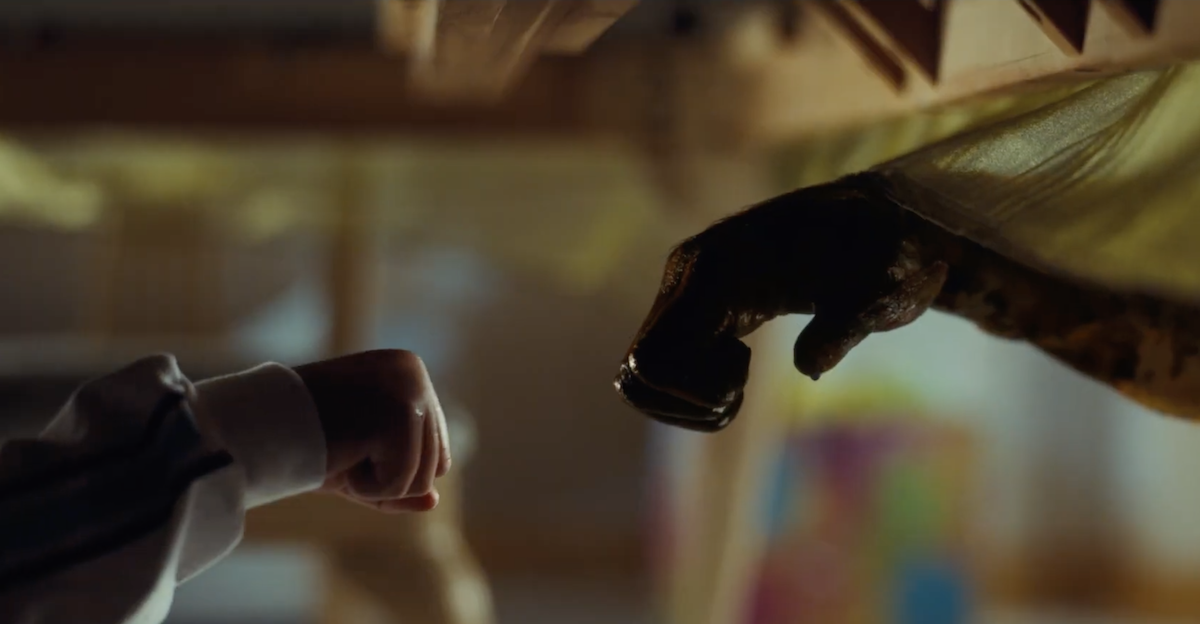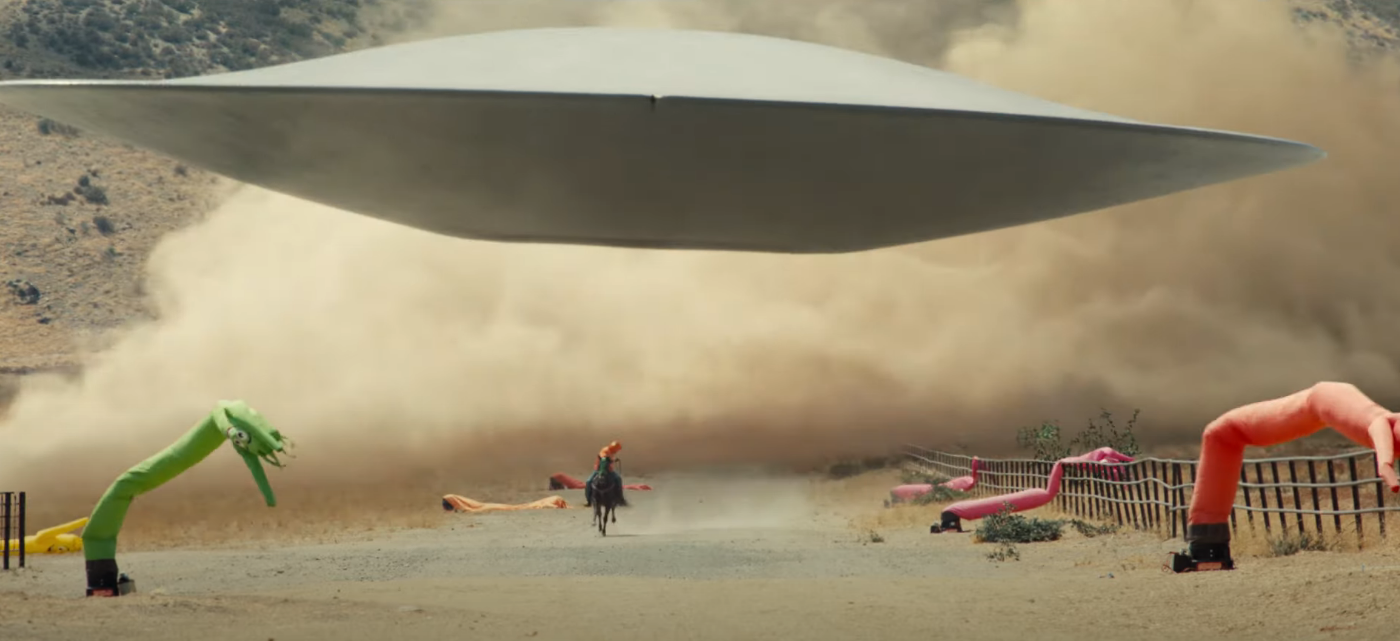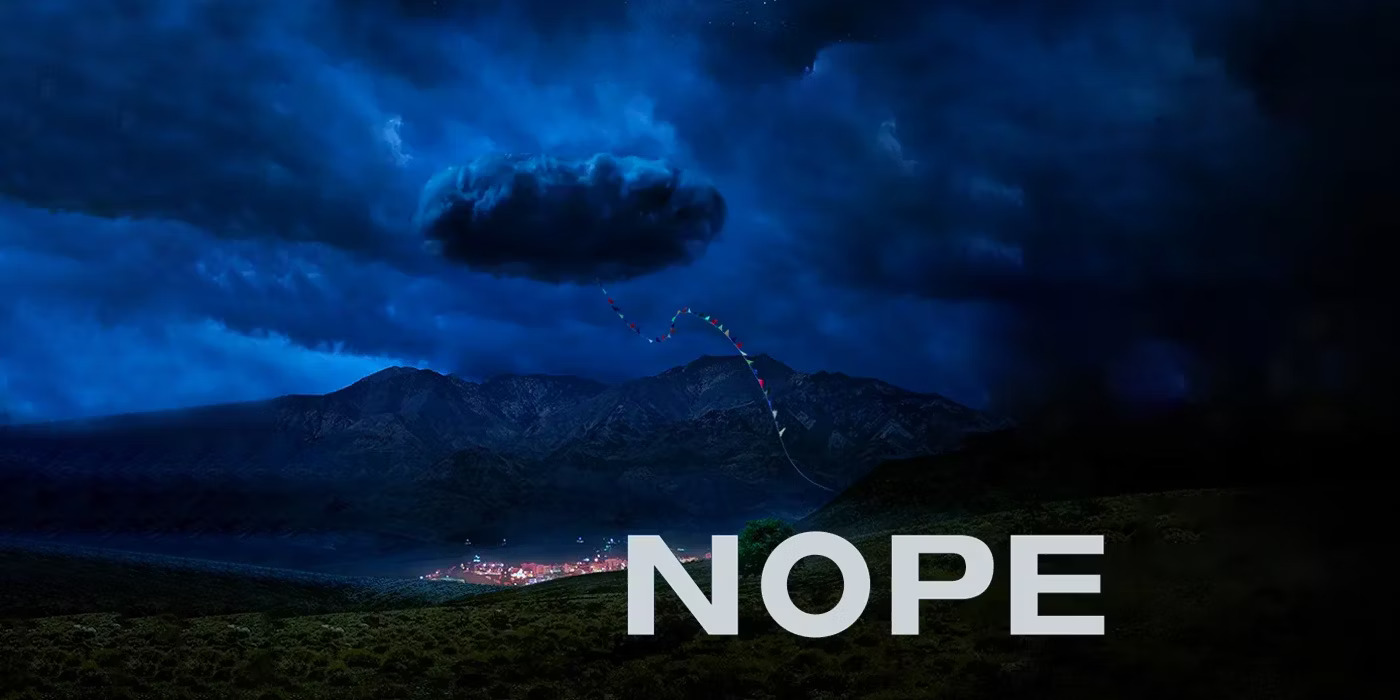'Nope' (2022) Reaction
Behind the veil of a summer popcorn movie, Jordan Peele unleashes one of the most thought-provoking films of the year

Jordan Peele’s third directorial effort, the sci-fi horror film Nope, had a very successful first week of release – currently the #1 film in America, the movie brings a new life to the phenomenon of the summer blockbuster. Along with being a huge financial success for non-franchise horror, grossing $44 million just in its opening weekend, the movie itself feels larger than life despite the desolate environment it takes place in.
It's taken me longer than I’d like to write about Nope because I simply don’t know where to begin – it’s such a dense film, and that’s meant as a compliment. Just from an expository perspective, there are so many ways to interpret and explain the meanings of certain aesthetic and diegetic components that it can be difficult to decipher what the central message or big idea is. One of the most common questions people ask when it comes to watching a new movie is “what’s it about?”, and in the case of Nope, that may be a more complicated answer than some would expect.
As far as the plot goes, the logline from Wikipedia states, “Two ranch-owning siblings [Daniel Kaluuya and Keke Palmer], with the help of a tech salesman [Brandon Perea] and a renowned cinematographer [Michael Wincott], attempt to capture and sell video evidence of an unidentified flying object.” This would lead one to believe that Nope is just another summer alien movie, and it is so much more than that.

To interpret the film without giving too much away, Nope is very reflexive in terms of filmmaking and film history – for example, the sibling protagonists are descendants of the unnamed horse jockey that was photographed in Eadweard Muybridge’s The Horse in Motion, a chronophotographic series of still images from the late 19th century that is popularly known in film schools as the foundational blueprint for filmmaking and the appearance of pictures in motion. They’re also Hollywood animal wranglers, an occupation that’s often overlooked by the layman moviegoer, and the film offers a brief glimpse into what that job can entail. There are also a plethora of easter eggs relevant to the genre, with the most prominent examples being the Haywood siblings’ father being played by Keith David, who also appeared in John Carpenter’s The Thing (1982) and They Live (1988), along with the presence of Terry Notary, who performed motion-capture for films such as Planet of the Apes (2001), Avatar (2009), and Kong: Skull Island (2017).
A large theme of Nope is exploitation for no other purpose than fame or entertainment – when the Haywood siblings discover the UFO above their ranch, they spend the rest of the film looking for “the Oprah shot,” which would be clear, irrefutable evidence of the existence of UFOs and/or alien life in order to gain notoriety and capitalize on their circumstances because in an age of “pics or it didn’t happen,” nobody would believe their claims if there wasn’t any clear photographic corroboration. Teaming up with an electronics store employee and a cinematographer from a previous shoot, they try to capture that evidence and become the next big thing.
The other side of the narrative seems to revolve around the concept of spectacle in entertainment, most notably the use of animals in productions and the asinine human belief that animals can and/or should be tamed and trained for our enjoyment. There’s an entire subplot that’s reminiscent of the 2009 domestic attack of Travis the Chimp, and the UFO that haunts the Haywood siblings has several different appearances and exhibits a variety of aggressive and defensive animal behaviors that can be seen in the real world. All of this can be translated to the real world, showing the consequences of what can happen when people try to take and subdue animals that are unpredictable and territorial by nature and use them for entertainment purposes.

There are a few small parts of the film that might seem out of place or not make sense to everyone, but that just enhances the film in a way because it adds to the sense of mystery that comes with every movie related to UFOs or aliens – not everything is going to add up because the human race doesn’t understand the nature of their invaders. Additionally, it contributes to the subjectivity of art and the fact that the film has several layers in terms of elucidation and meaning. Even the Old Testament verse from the third chapter of the book of Nahum shown on the opening screen (“I will pelt you with filth, I will treat you with contempt and make you a spectacle”) is open to interpretation. Feeling more apt to open a Cronenberg film, this can be inferred to reflect the graphic imagery that the horror genre is known for, but inversely, it could also be some sort of metaphor for how Hollywood and the entertainment industry chooses to exploit tragedy and violence for profit and spectacle value.
In regard to what’s seen and shown in the film, Nope is the first horror film shot with IMAX cameras and it shows. The cinematography here is absolutely beautiful, with the breathtaking exterior landscape views of the Haywood family ranch and the desolate town that surrounds it stealing the show – even the night scenes look gorgeous. No matter what is onscreen, the camera crew manages to make even the most simple shots, such as a running sprinkler, look like a work of art. Acting-wise, the film is perfectly cast, with Daniel Kaluuya and Keke Palmer giving very convincing performances as sibling characters, and the direct support from Steven Yeun, Brandon Perea, and Michael Wincott is solid as well. There wasn’t one moment in which a line was poorly recited or the viewer was taken out of the moment because of poor execution – audiences can really feel the chemistry between the actors, and their performances make the film great.

To wrap things up, Nope isn’t your usual alien movie – as stated several times already, there’s an abundance of ways to interpret the themes of the film because there’s just so much going on and a lot of topics being touched on, so it’s a matter of what sticks with the individual viewer the most. Before it heads to streaming services and home video, it needs to be emphasized that the film is made for a theatrical setting, and a movie theater is the best place to see a movie like this. Another fantastic aspect of the film was its marketing – for the longest time, nobody knew anything about Nope other than its title. Even the trailers barely gave any information away, and it was amazing to be going into a movie blind whether you saw the previews or not – definitely an approach that more films should adopt.
I personally can’t speak on Jordan Peele’s style as an auteur because I’m in the minority of people who still haven’t seen his previous two films, Get Out (2017) and Us (2019), but I can say that I’m impressed with his attention to detail with Nope. With an assortment of connotations enhanced by the multitude of genres being exhibited in this one movie (sci-fi, horror, western, comedy, it’s all present here), Peele made a film that not only encapsulates the sensation of the blockbuster, but also exemplifies the subjective discourse that comes with viewing and analyzing movies as an individual experience.

To learn more about Nope and buy tickets, click here
Thanks for reading! If you liked this article and want to keep up with more from me, feel free to subscribe

